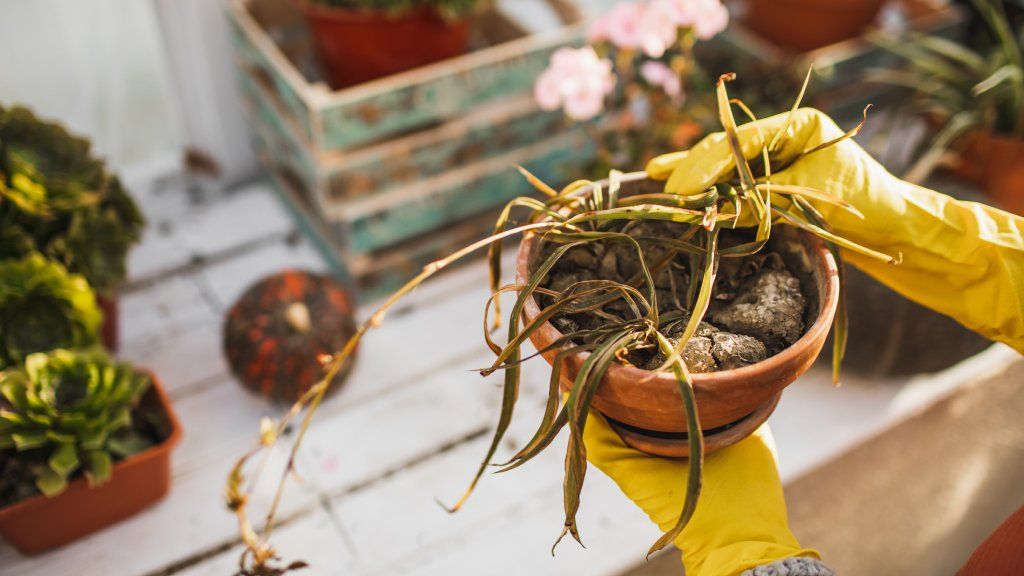Barletta floral plants, with their elegant trumpet-shaped blooms, make a stunning addition to gardens and indoor spaces. However, they are susceptible to fungal rot, which can quickly kill the plant if left unchecked. In this article, we’ll explore the causes of rot in Barletta floral plants and provide preventative care tips and treatment solutions to stop rot in its tracks.

What Causes Rot in Barletta Floral Plants?
Several factors can trigger the fungal growth that leads to rot in Barletta floral plants:
Overwatering – Excess moisture around the roots creates ideal conditions for fungus.
Poor Drainage – Wet soil due to inadequate drainage likewise encourages fungal diseases.
High Humidity – While Barletta floral plants enjoy humid conditions, excessive moisture promotes rot.
Pests – Insects like spider mites and aphids weaken plants and make them prone to rot.
Root Injuries – Damage to the root system gives fungus an entry point.
As you can see, too much moisture is the common thread linking most causes of rot. That’s why dialing in your Barletta floral plant’s watering needs is so important.
How to Prevent Rot in Barletta Floral Plants
The best defense against rot is proactively caring for your Barletta floral plants to avoid factors that contribute to fungal growth. Here are some prevention tips:
- Water properly – Allow soil to dry out between waterings.
- Improve drainage – Repot plants in soil with added perlite or sand.
- Increase air circulation – Use fans to prevent humidity buildup.
- Apply fungicide – Use a fungicidal spray as added protection.
- Remove pests – Insecticidal soap or neem oil can control bugs.
- Avoid root damage – Loosen tight roots when repotting.
Catching issues early also helps prevent widespread rot. Monitor plants frequently and address any signs right away.
Treating Rot in Barletta Floral Plants
If you detect rot in your Barletta floral plant, take action immediately. Here are some recommended treatment solutions:
- Prune out infection – Cut off all affected parts down to healthy tissue.
- Repot in fresh soil – Discard old soil and sterilize pots to remove fungus.
- Use fungicide – Apply a systemic fungicide to kill remaining spores.
- Improve air flow – Space plants out more to encourage circulation.
- Reduce watering – Allow soil to dry out more between waterings.
- Remove fallen leaves – Promptly discard rotting foliage around plants.
For advanced rot, destruction of the entire plant may be necessary to protect other plants. Completely sterilize all tools and pots after disposal.
While frustrating, the good news about rot in Barletta floral plants is that it’s largely preventable with proper cultural care. Keep your plants happy and you’ll be enjoying their beautiful blooms season after season.
FAQ
Does baking soda help root rot?
Why do I keep getting root rot?
Can a plant with root rot be saved?
How do I prevent root rot?
Prevention is the best option because root rot is hard to treat. Take extra care with the watering of your plants, and hopefully that will be enough for you. Be forewarned that a severe case of root rot cannot be fixed. Once the fungus is established and the damage done, you won’t be able to save the plant.
How do I prevent blossom end rot?
First, choose vegetable cultivars that are tolerant of calcium deficiencies and less likely to show blossom-end rot symptoms. Inconsistent watering is the main cause of calcium deficiency. Avoid watering your plants too much or too little. Instead, water consistently and evenly.
Why do plants rot?
A plant’s roots start rotting and can no longer absorb water effectively. Most often, root rot is caused by overwatering or poorly draining pots and potting mixes. Overly saturated soil deprives plant roots of the air they need to grow. If conditions don’t improve quickly, waterlogged roots start to die, and rot spreads throughout the plant.
How can I prevent rot on my Tomatoes?
Avoid over-fertilizing during early fruiting, when blossom-end rot is more likely to occur. Avoid cultivating or digging near the roots of plants, as root damage can affect their ability to absorb water and nutrients. Staking plants like tomatoes while still young and more adaptable is also a good idea.
